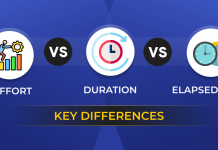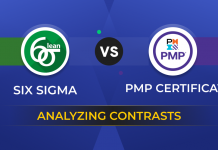
Four years back, the UK government kicked off a project within the NHS (National Health Service) to convert all patient records into electronic copies. 30,000 general practitioner doctors had to be linked with 300 hospitals to complete this exercise and the estimated cost was $ 4.6 billion.
Four years on today, the project is still incomplete, without a launch date, and has already spent more than $25.4 billion. The UK government, running out of patience, has given the suppliers a 7-month deadline to complete the project.
What is Project Scope?
Essentially, what a project needs to deliver is called the project scope. Furthermore, a project’s scope is the determination and documentation of the project’s specific goals, deliverables, tasks, costs, and deadlines.
If you are building a house – laying the foundation, building walls, thatching the roof, doors and windows, plumbing, electrical wiring, and painting could be part of the scope of the project.
What is Scope Creep?
According to the project management approach, the deviation of a project beyond its planned objectives is called scope creep. When this happens, you eventually run behind schedule and run out of money.
Halfway through the construction of the house, your customer might ask you to build a balcony in front of the house along with a small garden. If you do this, you will overrun your budget and also will not be able to finish the construction of the house on time. This is what is called scope creep.
Scope creep is the last thing that could happen to a project. This does not mean that scope creep can be prevented. It is natural for any project to go through scope creep. However, when you are prepared for this and have set up processes and allocated resources, change management during the project becomes a smoother process. This is what is known as Project Scope Management.
Scope creep is mainly caused due to inaccurate documentation of requirements and improper communication between the project team and the customer. When scope creep occurs, the project is doomed for failure. It is important to manage the scope of your project to prevent budget shortages and deadline delays.
There are 5 things you need to do as a project manager to effectively manage the scope of your project.
Improve Project Success with Better Project Scope Management
-
Accurate Requirements Documentation:
Meet with the stakeholders of the project and understand their requirements. Document these requirements clearly and sign them off by both parties. Once this is done, share the scope document, which is usually part of the project charter, with your project team so that everyone is aware of the vision of the project, the objectives, and the deliverables of the project.
-
Prioritization:
Once you have an exhaustive list of requirements, brainstorm with your team and then with your customer to prioritize the requirements. Your deliverables list might have 20 items. However, it is not possible to deliver all 20 at the same time, and prioritization becomes key. In most situations, customers tend to want everything. Therefore, it is your duty as a project manager to help them figure out the requirements which will benefit them the most and prioritize those requirements.
-
Set Milestones:
Apart from the routine stages of your project, set smaller milestones and make your team well aware of them. Reward them for small achievements. Set minor targets because it is easier to manage. When you work with a team you do not know, it is always advisable to estimate 150% of the usual time estimate. This way, your project schedule would be more realistic and you would not have over-committed to the customer and then under-delivered.
Once the schedule is created, allocate resources and build your work breakdown Structure. Your critical path might undergo changes during the life of the project. Therefore, make room for it beforehand so that there is time for changes or modifications during the course of the project.
-
Communication:
This is one of the key aspects of scope management. Communication here not just implies the communication between you and your team, it also implies the communication between you and the customer. Keep in constant touch with the customer and advise them of the developments in the project. When the customer comes up with new requirements, take them under consideration and take a call with your team involved in it. Never promise anything to the customer without fully comprehending the impact of it on your current schedule and budget.
-
Expect Scope Creep:
When the stakes are high and there are thousands of people involved, it is inevitable for the project to go through scope creep. Therefore, the best you can do is to be ready for it. Set up the change management process right at the beginning and educate your team on it. Ensure each and every member of the team is aware of the process when there is a change that is forecasted or has occurred. Perform a cost-benefit analysis before you implement any kind of change. If the opportunity cost of not implementing the change is lesser than the benefit of implementing it, then it always makes more business sense to let it be and not do anything.
Implementing all these 5 steps will help you manage your project scope in an efficient manner. However, It is not easy to execute all of these in one go. Even if you could try and implement three of these 5 steps, it would go a long way in managing scope creep and delivering more successful projects without any budget overruns or deadline delays.














